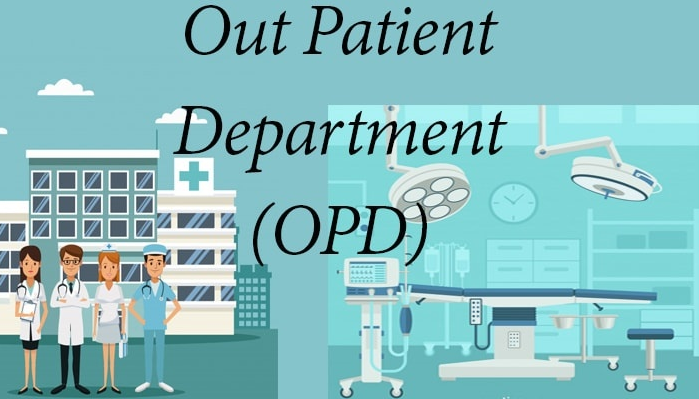
The full form of OPD in the hospital is an outpatient department. The OPD is the first intermediary between patients and hospital staff. When patients are first brought to the OPD for examination, the OPD doctor refers them to the appropriate ward for the care the patient needs. This is the first point of contact for the patient. The full form of OPD is the “Outpatient department”. The outpatient department (OPD) is designed as the first point of contact between the patient and hospital staff in the hospital department. A patient who comes to the hospital for the first time goes directly to the OPD, and the OPD then decides which ward the patient should go to.
The OPD full form in medical is outpatient department. It is an essential part of the overall operation of the hospital. The ambulance is a part of a hospital for the outpatient care of people with medical conditions who come to the hospital for diagnosis or treatment but at that time do not require a bed or a treatment at night.
Modern outpatient clinics offer various medical services, diagnostic tests, and minor surgical interventions. Usually located on the ground floor of a hospital, OPD is divided into several sections, such as; the department of neurology, orthopedics, gynecology, general medicine, etc. Here the patients complete all the formalities and then go to their respective wards. After discharge, you can go to an outpatient clinic for follow-up care.
What is the Concept of OPD?
OPD is intended for the diagnosis, diagnostic testing, and minor surgical procedures in patients that do not require hospitalization. Doctors from various disciplines such as gynecology, orthopedics, general medicine, and others are available at OPD. Although OPD is different from the internal department of a medical institution, OPD doctors also oversee the internal department. Patients who have been hospitalized can visit the OPD for follow-up with their doctor after discharge.
Fees Charging at OPD in Hospitals:
Different hospitals charge different amounts for patients attending OPD. For government hospitals, the costs are minimal. In contrast, OPD or private hospitals may vary and are determined by the hospital authority.
What is the OPD Full Form in Medical?
The OPD full form in medical is outpatient department. The word OPD has many complete forms that fall into different categories, which we will discuss further in this article.
Advantages of OPD:
OPD is the primary treatment required for treatment. Clients just need to visit the clinic, and the doctor will make a diagnosis after paying the amount of treatment. This is a ward where patients are diagnosed and treated by doctors. Here are some of the advantages of OPD:
- This is the first step toward medical treatment
- It is a stepping stone for more appropriate treatment and prevention
- Provides screening and testing
- Easy access to resources and information
- This is an essential step in disease prevention
The full form of OPD “Outpatient Department” is less expensive and provides the care patients need. This is a precious step in the field of medicine because patients without OPD cannot understand their health condition. Through regular visits to the OPD, patients can find out about various diseases and also avoid disease. Lots of guidance and control from management, so it’s easy to control and provide the best service.
OPD Full Form:
An outpatient polyclinic, sometimes you can say it an outpatient polyclinic, is a part of a hospital that is for the outpatient care of patients or people with health problems who come to the hospital for diagnosis or treatment but do not require a bed or need treatment. There for Moment of night care. Hospital outpatient departments offer a wide range of therapeutic options, diagnostic tests and minor surgical interventions.
Ambulances are usually located in the basement of a hospital, with parking nearby. Non-outpatients can use wheelchairs and stretchers. Patients check in at the front desk and sit while waiting for their appointments. Each doctor has their own consultation room with a smaller waiting area nearby. Children’s clinics are usually separate from the adult clinic. The treatment of outpatients is in the same ward as inpatients because not all hospitals have a separate outpatient department.
What is the OPD Full Form in Hospital?
Although outpatient care (OPD) may seem very similar to daycare care, the real difference between the two lies in the type of hospitalization required in each of the above situations. For example, with OPD, a person must complete the entire procedure without hospital admission. In a child care regime, on the other hand, a person has to be in the hospital, even if only for a short time, to make a claim.
Root canal treatment is an example of OPD; its evaluation and treatment are done by visiting a regular dental clinic instead of being admitted to the hospital. Patients don’t need admission to the hospital to use the Outpatient Clinic (OPD). This type of treatment requires regular visits to the doctor’s office or clinic. Moreover, doctors can carry out the treatment in their own clinics.
OPD Full Form FAQs:
What is the full form of the abbreviation OPD?
OPD stands for Out-Patient Department in the medical world.
What is the full form of OPD in Hindi?
The full form of OPD in Hindi is बाह्य रोगी विभाग.
What is the full form of the abbreviation IPD?
The abbreviation IPD stands for Inpatient Hospital Care.
In a hospital, what is IPD?
To be eligible for inpatient care (IPD), you must have a medical condition that requires inpatient treatment (IPD) by a doctor.
What is the significance of OPD?
OPD may be an add-on, but it is as essential as your comprehensive health insurance in a medical emergency. The OPD will help you cover all medical examination and consultation costs. It is ideal for people who suffer from chronic diseases and need to see a doctor regularly.


